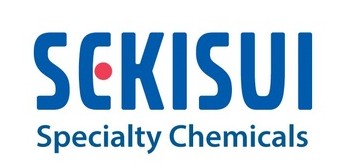
Discover what’s shaping the future of the specialty papers industry.
The just-released agenda for Specialty Papers US 2025 is packed with can’t-miss presentations on fiber innovation, regulatory shifts, sustainable alternatives, end-use breakthroughs and more!
See who’s taking the stage in Chicago this October and explore the expertly-led sessions below.
Join the mailing list for the latest information >>>


Scott McNutt has over 40 years of experience in the paper industry, with a focus on process and product knowledge in the disciplines of papermaking, quality, engineering, operations management, Lean/Six Sigma, product development and innovation. He is well-versed in the downstream converting processes and end use requirements for cut sheet, QSR, flexible packaging, and technical specialty grades.
He started his career in specialty paper at Dunn Paper, serving in roles process engineering, quality management, and product dev. He transitioned to Fine Paper with Willamette and was part of the effort to infuse state-of-the-art papermaking technology into the fine paper industry in the US. He then managed the production operations for Wausau Papers, returning to his specialty paper roots. To bring his career full circle, he returned to Dunn Paper in Port Huron to drive operations success and innovation.
He has toured a vast number of pulp and paper mills in the US and abroad, exploring new technology. Scott has been a member of TAPPI since 1985, attending numerous events at the local Chapters as well as annual Conferences. In addition, he has been active in the Smithers Specialty Papers Conferences in Europe and North America. He is currently active in the TAPPI Mentor program and recently joined the Tappi Nanotechnology subcommittee.
His primary focus now with Nextep Partners LLC Consulting is on paper innovations for sustainable packaging applications.


Jason Bergquist is the CEO – North America at RecycleMe, the consulting division of Reclay Group International. With over 35 years of expertise, Jason has led commercial and municipal waste divisions, material recovery operations, and bottle bill redemption in Maine, New York, and California. Throughout his career, he has worked in the U.S., Europe, and Asia, and brings a global perspective to recycling. He holds a Juris Doctor (JD) degree from John F. Kennedy University of Law and has advised on Superfund compliance, beverage container deposit law and hazardous waste management.


A representative voice in paper-based solutions with 20+ years’ experience in Paper & Packaging Industry, serving major Industrial, CPG Brands, Retailers and Private Labels, and E-Commerce provider. First point of contact in Mondi for Retailers and Brands on achieving Sustainability goals in packaging with flexible solutions (paper, plastic, hybrid) and circular business model. Holding a Civil Engineering Degree, MBA & Executive programs in Sales & Marketing Excellence from US Business Schools, and specialized in Business Sustainability, Net Zero, Circular Economy from the University of Cambridge. Grown in Venice (Italy), international market experience, living a multicultural family, passionate Sailor, Architect & Engineer of Sustainability in Business.

.png?ext=.png)
Scott drives business development and leads the Applications group in barrier coatings for Solenis. Scott joined Solenis several years ago after seeing the paper industry from many angles, working as a process engineer, specialty paper machine superintendent, quality control manager, director of sustainability and product stewardship, product development and innovation manager, product manager, special projects manager, and finally paper sales manager. Most of his 25 years in paper where focused on specialty papers, including pressure sensitive labels, release liners, food service and packaging papers, wet-strength and engineered papers and developing barrier coated papers. The last several years, Scott has been with Solenis promoting their barrier coatings to the industry, furthering the sustainability advantage of paper as a packaging alternative. Scott also had an alternate 20-year career in the US Army and Wisconsin National Guard, retiring as a First Sergeant and leading two separate year-long deployments to the Middle East.


Dr. Johannes Zipfel studied chemistry with a focus on physical and macromolecular chemistry and completed his Ph.D. at the Faculty of Macromolecular Chemistry at the University of Freiburg, including a three-year research stay at the Institut Laue-Langevin in Grenoble, France.
In 2019, he took on the challenge of establishing DELSCI GmbH in Traun, Austria, as the exclusive research center of delfortgroup AG. As Managing Director, he is responsible for the company’s scientific, strategic, and business direction. The research of his team focuses on developing advanced paper-based materials to replace plastics in demanding packaging applications, enabling delfort’s customers to transition to more sustainable solutions.
He began his industrial career at Henkel, where he held various international leadership roles in R&D, quality, and supply chain management, contributing to global brands such as Persil, Somat, and Pril.
Since 2025, Dr. Zipfel has served as an expert in the CEN Technical Committee TC261/WG3/SG2, contributing to the development of technical specifications for paper packaging under the forthcoming Packaging and Packaging Waste Regulation (PPWR).
From early 2024 to 2025, he co-led Workstream 1 (WS1) of the 4evergreen (4EG) initiative to develop the new CEPI recyclability evaluation protocol.

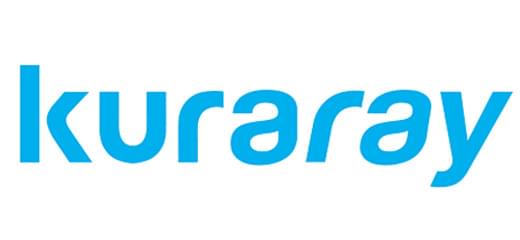
David Chacon is a Technical Service and Market Development Specialist for Plantic in the Americas. David holds a B.S. degree in Chemical Engineering from Universidad Simon Bolivar in Caracas, Venezuela, and an MBA from Deakin University in Melbourne, Australia. David has over 25 years of experience in various industries, such as Oil & Gas, FMCG and, Paper and Plastic Packaging, This experience includes 20+ years in plastic extrusion and process management, packaging converting technologies, and market development. David supported the Plantic Australia business expansion for more than 13 years. In 2021, he moved to Houston and has been instrumental in developing the Plantic Market in the Americas.

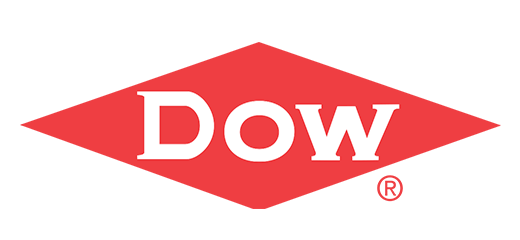
Brian graduated from Virginia Tech with PhD in Polymer Science and Engineering. He started at Dow in 2008 as an applications scientist in the Paper Coatings business. He has held roles in R&D and technical service where he has developed binders with improved strength, hollow sphere pigments for thermal insulation and opacity, and barrier materials for food packaging.

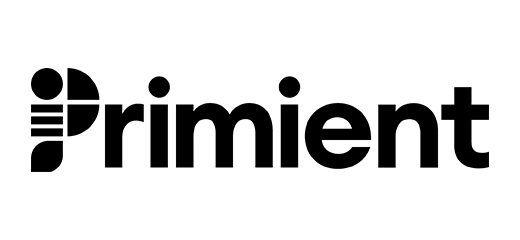
Brad Hartong supports Application Development at Primient.
Brad’s career spans 19 years across both the chemical and paper industries. Much of his work has been focused on barrier chemistries development as well as paper coatings.
Brad eared a Paper Science and Engineering, BS degree from Miami University in Ohio as well as completed advanced degrees (Masters and PhD) in the same field from the Institute of Paper Science and Technology.


Dr. Sandeep Kulkarni is the founder and President of KoolEarth Solutions Inc., a technical consulting and business development company focused on helping companies develop and commercialize new sustainable packaging solutions as well as to improve the sustainability footprint of existing packaging and to reduce/eliminate packaging waste. He is also VP, Plastics and Packaging at Ubuntoo (www.ubuntoo.com), a unique environmental solutions platform to address plastic waste, plastic litter, food waste, sustainable fashion and so on.
Sandeep has over 20 years of industry experience working for several large packaging companies, such as International Paper, Neenah Paper and Georgia Pacific. Most recently he worked for PepsiCo, in the area of sustainable beverage packaging. His diverse expertise includes recycling, bioplastics, paper based as well as molded fiber packaging. Sandeep has 7 granted patents as well as several publications in industry journals. He has also served on conference advisory boards and has delivered several invited presentations, at international conferences, on the topics of sustainability and sustainable packaging. Sandeep serves as an Adjunct Professor at The Packaging School (a spinoff from Clemson University) as well as the North Carolina State University. Recently he was elected to serve as member of the Executive Committee of the Sustainable Packaging Coalition (SPC) for 3 year term (2021-2024)

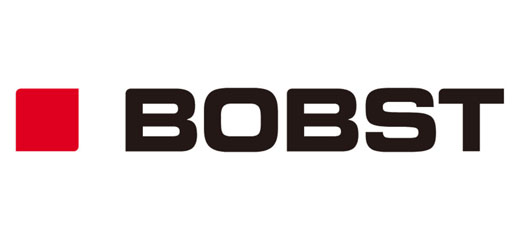
Chris Marshall has over 25 years experience in the food packaging industry with a strong interest in sustainable packaging solutions. He currently covers the Midwest for BOBST flex pack machinery including CI, roto, lamination, coating and metallizing.


In his current role, Jake drives marketing communications, product development, and commercialization for the industrial ingredients business at Ingredion. Jake’s background is working with chemical suppliers in the paper industry, having developed expertise in recycled linerboard manufacturing. Jake, his wife, and dog Cannoli are based out of Rhode Island.


Venkatapathi Sagi, a distinguished Technology Specialist at Honeywell Process Solutions in Charlotte, NC, boasts over 20 years of expertise in advanced controls for sheet manufacturing processes like Paper, Tire, Film and Tape, Aluminum foil and cold rolling with a focus on Paper Machine controls optimization. Holding a master’s in business Analytics from UNC Wilmington, he has deployed 250+ Honeywell Quality Control Systems worldwide, specialized in optimizing process controls for specialty paper grades ensuring consistent product quality and minimal waste., as detailed in his study " Golden Run Analytics: Leveraging AI to Improve Paper Machine Controls." Honored with Honeywell’s 2015 Chairman’s Award and PMT Asia excellence award, Sagi is a Senior Member of IEEE and ISA, driving innovation in sheet manufacturing efficiency and quality.


Stewart Holm is Chief Scientist at the American Forest & Paper Association (AF&PA). He has been with AF&PA since
2013 and has worked in the industry for over 25 years. Holm is responsible for managing the industry’s scientific research
and identifying research opportunities across the forest products industry. He also manages chemical risk issues and product stewardship. Examples of chemicals where he has expertise include perfluorinated chemistry, formaldehyde, dioxins, hydrogen sulfide and wood dust. He has over 100
peer-reviewed scientific publications, book chapters, and scientific abstracts.
Holm was appointed by Maine’s Environmental Commissioner to the State’s Surface Water Protection program from 1997 to 2006. He is currently a member of the National Council for Air and Stream Improvement, Long-term Receiving Water program expert panel. He received a best paper award from the International Nonwovens Association for: Formaldehyde – A genomic description of mode of action and its relevance to risk assessment.
Holm received his Master of Science in Chemical Oceanography from the Florida Institute of Technology. He holds an undergraduate degree with majors in Chemistry and Biology from Drury University. He was also awarded a Congressional Fellowship by the Sea Grant College Program in Environmental Science and Policy.


Romain Metivet is the Co-Founder and CEO of Cellulotech, which has developed a breakthrough solvent-free cellulose functionalization process enabling repulpable, cost-effective barriers and entirely new high-value paper products that were not possible before. Cellulotech partners with leading companies to create sustainable packaging solutions and unlock novel applications for paper in multiple industries.


Natasha Melton is a graduate from James Madison University with a degree in Biotechnology and over 10 years of experience in the paper and packaging industries. She has worked in R&D, engineering, and product development roles with a focus on sustainable packaging. At Earthodic, she leads the product team in the development of bio-based, circular barrier coatings. Her work in the industry has earned her TAPPI's Young Professional of the Year Award and Progressive Grocer's GenNext Award.


Christian Kemp-Griffin is a Canadian & French citizen who graduated from Princeton University before launching his career in the fashion and textile industry, where he worked as a senior director and Ralph Lauren and Disney Consumer products and then held divisional president and CEO positions at Lacoste and Edun respectively. Kemp-Griffin was one of the early pioneers in organic fiber farming and sustainable business practices. His vast experience in these fields lead him to the position of CEO at CelluComp, where he has raised funds, developed customers and led a team to launch the market for microfibrilated cellulose derived from vegetable waste streams. Kemp-Griffin and his wife have 5 children and reside in France.

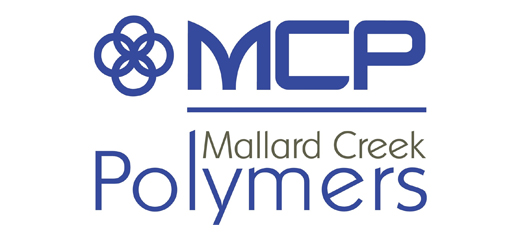
Steve Ottone is the holder of a BS and MS in Wood Science from the Pennsylvania State University. His career started in the paper industry with work for Container Corporation of America, St. Regis Paper, and Champion International. He then moved to the supplier side, working in latex supply to the paper industry for Reichhold, Inc., Dow Reichhold Specialty Latex, and Mallard Creek Polymers. He worked for 7 years with a supplier of ground calcium carbonate into the paper industry. He’s currently a Technical Service Representative with Mallard Creek Polymers, a leading supplier of latex polymers for barrier coatings. His area of emphasis is polymer and rheology modifier solutions to barrier coatings needs.